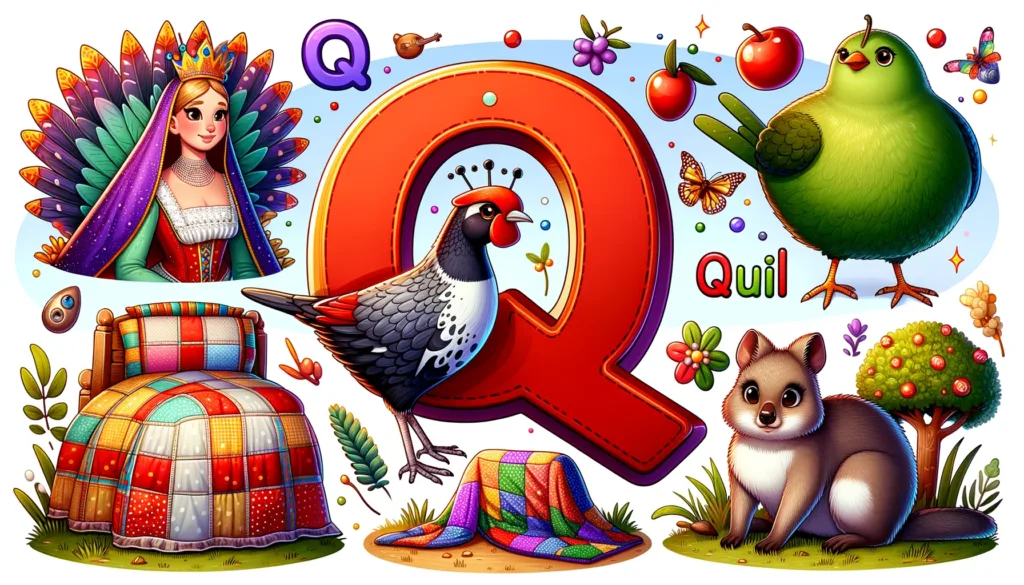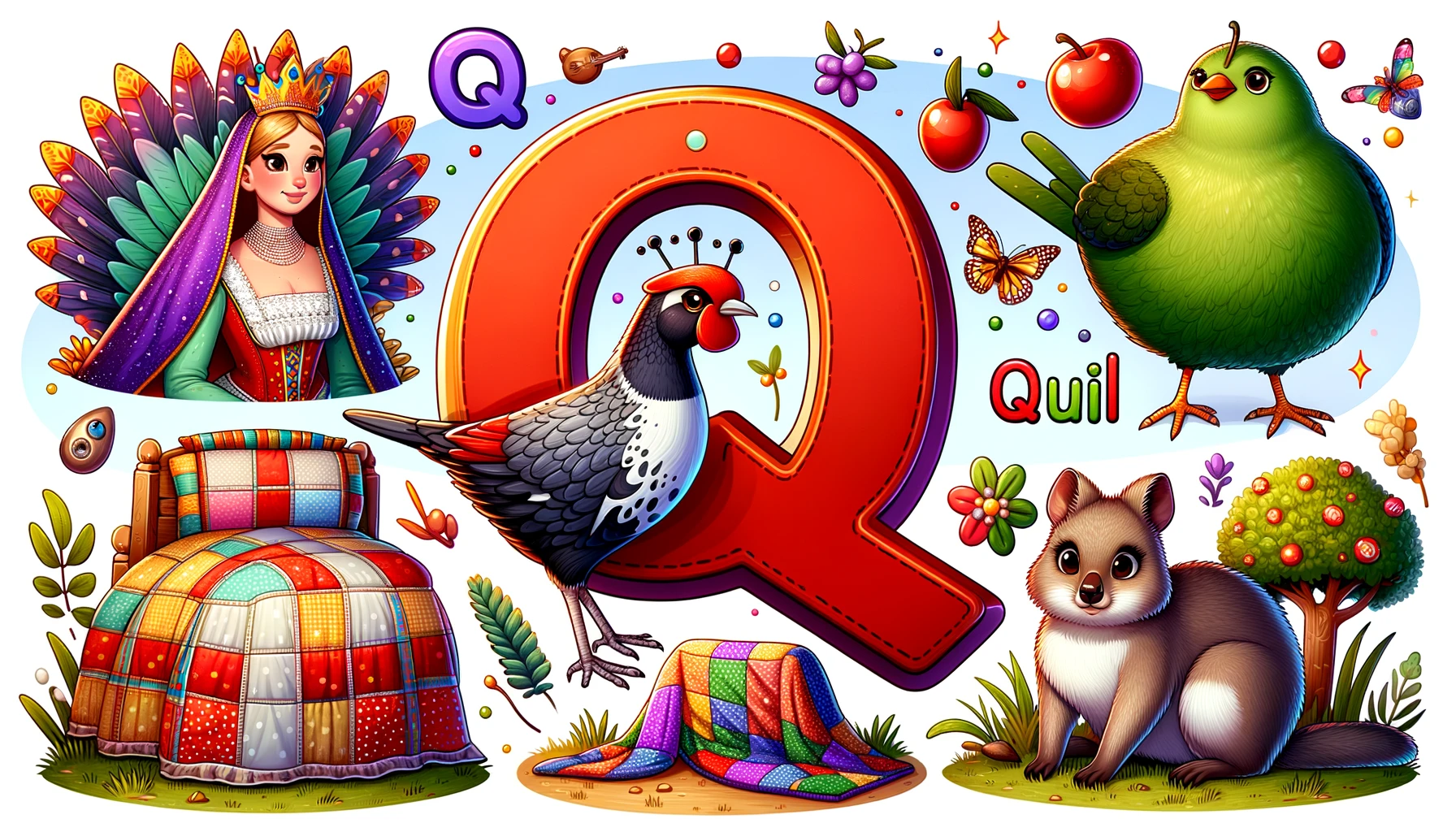Q
The letter “Q” is the seventeenth letter in the Latin alphabet, used in English and other languages. Here’s a look at its history and characteristics:
- First, Origins: “Q” originated from the Phoenician alphabet, where the letter “qoph” may have represented a sewing needle, with the thread passing through its eye. The Greeks did not adopt this letter directly into their alphabet, but the Etruscans and later the Romans did, which is how it entered the Latin alphabet.
- Second, Capital and Lowercase Forms: The uppercase “Q” usually resembles an “O” with a tail extending from its lower right. The lowercase “q” typically mirrors the shape of the lowercase “p,” but with the tail on the right side.
- Third, Phonetic Usage: In English, “Q” is almost always followed by a “U” and together, they produce a sound like “kw,” as in “queen.” In other languages, “Q” can have sounds not typically found in English, such as the uvular stop in Arabic or the voiceless uvular stop in Inuit languages.
- Fourth, In Mathematics and Science: “Q” has several uses in these fields. In physics, “Q” can stand for charge, quantity of heat, or electric charge. In statistics, “Q” often denotes a quartile or a quantile.
- Fifth, Cultural Significance: “Q” does not have as many widespread cultural meanings as some other letters but is known for its distinctive presence in word games and puzzles, often being one of the rarer and higher-scoring letters.
- Sixth, Typography: In typography, the design of “Q” is notable for its tail. This feature can significantly vary between different typefaces and can affect the overall aesthetics and readability of the font.
- Seventh, Digital Representation: In ASCII, the standard character encoding for electronic communication, the uppercase “Q” is represented by the number 81, and the lowercase “q” by 113.
The letter “Q,” with its unique form and phonetic properties, plays a fascinating role in various languages and has diverse applications across different fields.

<ⓒ WizardMedics (wizardmedics.com)>







